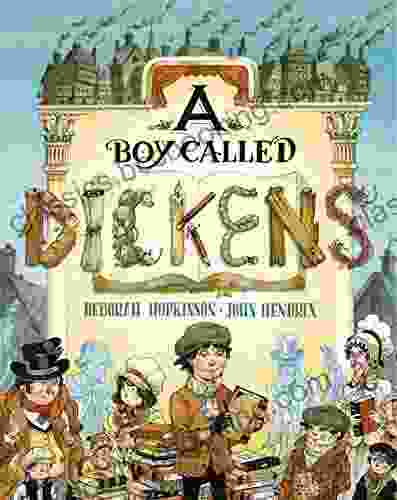Chromophobia Foci: Exploring the Enigmatic World of Color in Contemporary Art

In the realm of contemporary art, color holds a paradoxical allure. Both revered and reviled, it has the power to evoke profound emotions, stimulate the senses, and shape our perceptions of the world around us. Yet, alongside its celebrated transformative abilities lies a persistent undercurrent of unease, a fear of color's transformative power, a phenomenon known as "Chromophobia."
4.4 out of 5
| Language | : | English |
| File size | : | 321 KB |
| Text-to-Speech | : | Enabled |
| Screen Reader | : | Supported |
| Enhanced typesetting | : | Enabled |
| Print length | : | 128 pages |
Chromophobia, a term coined by David Batchelor in his seminal book "Chromophobia," encapsulates this complex relationship between color and society. Batchelor argues that color has historically been marginalized and devalued within Western culture, often seen as a superficial or even dangerous force. This fear of color has manifested itself in various ways, from the exclusion of color from serious art to the censorship of colorful imagery.
In "Chromophobia Foci," Batchelor delves into the myriad ways in which contemporary artists have grappled with the complexities of color. Through in-depth analysis of specific artworks, he explores how artists have challenged traditional notions of color, pushing the boundaries of its expressive potential while exposing the underlying anxieties and contradictions that surround it.
One of the key themes that emerges from Batchelor's analysis is the tension between color's aesthetic and symbolic value. While color has long been celebrated for its ability to enhance visual appeal and create emotional impact, it has also been feared for its potential to manipulate and deceive. This tension is evident in the work of many contemporary artists, who explore the ways in which color can be both alluring and unsettling.
For example, Batchelor examines the work of Mark Rothko, whose abstract paintings explore the transformative power of color through the juxtaposition of vibrant and muted hues. Rothko's paintings invite contemplation and introspection, revealing the ways in which color can evoke a range of emotions from serenity to existential angst.
Another artist featured in "Chromophobia Foci" is Anish Kapoor, whose sculptures and installations often play with the interplay of light and color. Kapoor's works challenge traditional notions of form and space, creating immersive experiences that explore the psychological and perceptual effects of color. His use of intense and saturated colors, such as the iconic "Vantablack," pushes the boundaries of what is considered visually acceptable, inviting viewers to question the limits of perception.
Batchelor also explores the ways in which contemporary artists have used color to engage with social and political issues. Artists such as Jenny Holzer and Barbara Kruger have employed color as a powerful means of communication, creating works that address issues of gender, race, and power. By juxtaposing text and color, these artists challenge conventional notions of representation and visibility, forcing viewers to confront uncomfortable truths.
"Chromophobia Foci" is a groundbreaking work of art criticism that offers a comprehensive exploration of the complex and often contradictory relationship between color and society. Through his insightful analysis of contemporary artworks, Batchelor sheds light on the ways in which artists have both celebrated and critiqued color, revealing its profound impact on our visual culture and lived experience.
Whether you are an artist, an art critic, or simply someone fascinated by the power of color, "Chromophobia Foci" is an essential read. It is a thought-provoking and visually stunning journey into the enigmatic world of color, challenging our assumptions and opening up new possibilities for understanding its multifaceted role in contemporary art.
About the Book
Chromophobia Foci by David Batchelor is a seminal work of art criticism that explores the paradoxical relationship between color and society. Published in 2000, the book has had a profound impact on the field of contemporary art, influencing artists, critics, and scholars alike.
Batchelor argues that color has historically been marginalized and devalued within Western culture, often seen as a superficial or even dangerous force. This fear of color, known as "Chromophobia," has manifested itself in various ways, from the exclusion of color from serious art to the censorship of colorful imagery.
In "Chromophobia Foci," Batchelor delves into the myriad ways in which contemporary artists have grappled with the complexities of color. Through in-depth analysis of specific artworks, he explores how artists have challenged traditional notions of color, pushing the boundaries of its expressive potential while exposing the underlying anxieties and contradictions that surround it.
The book is divided into three main sections:
- Color and Value: This section examines the historical devaluation of color in Western art and culture.
- Color and Meaning: This section explores how color has been used to convey specific meanings and associations.
- Color and Power: This section examines the ways in which color has been used to exert power and control.
"Chromophobia Foci" is a richly illustrated book that features over 100 color plates of artworks by a wide range of contemporary artists, including Mark Rothko, Anish Kapoor, Jenny Holzer, and Barbara Kruger. The book also includes a comprehensive bibliography and index.
About the Author
David Batchelor is a British artist, writer, and curator. He is a Professor of Art History at the Royal College of Art in London. Batchelor's work focuses on the relationship between art and science, and he has written extensively on color theory, perception, and the history of art.
"Chromophobia Foci" is Batchelor's most well-known book, and it has been translated into over 10 languages. Batchelor has also published several other books on art, including "The Luminous and the Gray" (2007),"Chromophobia" (2009),and "Color for Architects" (2018).
"Chromophobia Foci" is a groundbreaking work of art criticism that offers a comprehensive exploration of the complex and often contradictory relationship between color and society. Through his insightful analysis of contemporary artworks, Batchelor sheds light on the ways in which artists have both celebrated and critiqued color, revealing its profound impact on our visual culture and lived experience.
Whether you are an artist, an art critic, or simply someone fascinated by the power of color, "Chromophobia Foci" is an essential read. It is a thought-provoking and visually stunning journey into the enigmatic world of color, challenging our assumptions and opening up new possibilities for understanding its multifaceted role in contemporary art.
4.4 out of 5
| Language | : | English |
| File size | : | 321 KB |
| Text-to-Speech | : | Enabled |
| Screen Reader | : | Supported |
| Enhanced typesetting | : | Enabled |
| Print length | : | 128 pages |
Do you want to contribute by writing guest posts on this blog?
Please contact us and send us a resume of previous articles that you have written.
 Book
Book Novel
Novel Page
Page Chapter
Chapter Text
Text Story
Story Genre
Genre Reader
Reader Library
Library Paperback
Paperback E-book
E-book Magazine
Magazine Newspaper
Newspaper Paragraph
Paragraph Sentence
Sentence Bookmark
Bookmark Shelf
Shelf Glossary
Glossary Bibliography
Bibliography Foreword
Foreword Preface
Preface Synopsis
Synopsis Annotation
Annotation Footnote
Footnote Manuscript
Manuscript Scroll
Scroll Codex
Codex Tome
Tome Bestseller
Bestseller Classics
Classics Library card
Library card Narrative
Narrative Biography
Biography Autobiography
Autobiography Memoir
Memoir Reference
Reference Encyclopedia
Encyclopedia Daphne Poltz
Daphne Poltz Dean Ornish Md
Dean Ornish Md David Bryant
David Bryant Daniella Mason Sky
Daniella Mason Sky David L Roll
David L Roll Darren Critchley
Darren Critchley David Baker
David Baker David Day
David Day David King
David King Deborah Clark
Deborah Clark David Hart
David Hart Dawn Dais
Dawn Dais Dean Nelson
Dean Nelson Danielle Y C Mcclean
Danielle Y C Mcclean David J Goldman
David J Goldman Danielle Keil
Danielle Keil Daniel Polansky
Daniel Polansky David Ryan
David Ryan Debby Waldman
Debby Waldman David J Rothman
David J Rothman
Light bulbAdvertise smarter! Our strategic ad space ensures maximum exposure. Reserve your spot today!

 Albert CamusDesert Survival Skills: The Ultimate Guide to Surviving in the Vast and Arid...
Albert CamusDesert Survival Skills: The Ultimate Guide to Surviving in the Vast and Arid...
 Michael CrichtonBiohacking Your Body: The Ultimate Guide to Health Optimization and Peak...
Michael CrichtonBiohacking Your Body: The Ultimate Guide to Health Optimization and Peak... Norman ButlerFollow ·3.5k
Norman ButlerFollow ·3.5k José SaramagoFollow ·19.4k
José SaramagoFollow ·19.4k Devin CoxFollow ·9.3k
Devin CoxFollow ·9.3k Troy SimmonsFollow ·4.4k
Troy SimmonsFollow ·4.4k Braden WardFollow ·8.8k
Braden WardFollow ·8.8k John UpdikeFollow ·19.3k
John UpdikeFollow ·19.3k Cristian CoxFollow ·14.3k
Cristian CoxFollow ·14.3k Gerald BellFollow ·11k
Gerald BellFollow ·11k

 Cameron Reed
Cameron ReedHow to Know When Language Deceives You
Unmasking the Power of...

 Robbie Carter
Robbie Carter50 Things To Know About Planning Home Schooling...
: The Power of Hands-On Learning Embarking...

 Julio Cortázar
Julio CortázarCalculus: Single and Multivariable, 8th Edition — The...
Calculus is the...

 Jaime Mitchell
Jaime MitchellBunnicula and Friends: A Spooktacular Tale of Mystery and...
In the quaint little town of Celeryville,...

 Josh Carter
Josh CarterPeppa Easter Egg Hunt: Join Peppa Pig on an...
Get ready for...

 Donovan Carter
Donovan CarterBoy Called Dickens: A Journey into the Childhood of a...
Delving into the...
4.4 out of 5
| Language | : | English |
| File size | : | 321 KB |
| Text-to-Speech | : | Enabled |
| Screen Reader | : | Supported |
| Enhanced typesetting | : | Enabled |
| Print length | : | 128 pages |








